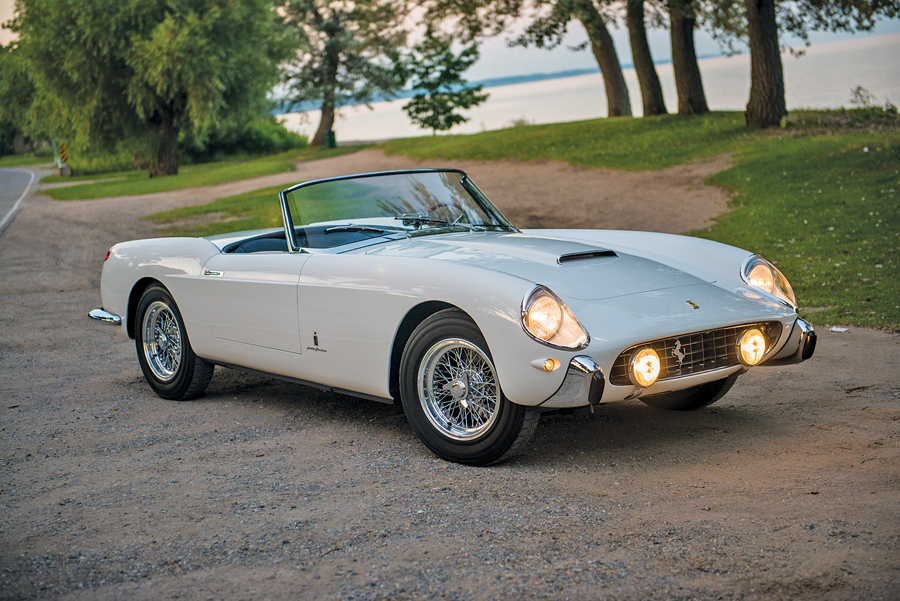Chassis Number: 0791GT
The 14th of 40 Series I 250 GT cabriolets built, chassis 0791GT was delivered new in a very attractive colour combination of Bianco over Blu Connolly leather. Its color scheme perfectly suited the car’s personality as a fashionable open-top Ferrari.
First owner John R. Fulp Jr. of Greenville, SC, was a gentleman racer with respectable showings at both Sebring and Le Mans. Fulp kept the car until the fall of 1959, when it was traded back to Luigi Chinetti for a 410 Superamerica.
Chinetti sold the cabriolet to James Harrison, who had it refinished in silver over red with the dashboard revised similarly to that of a 400 Superamerica. When issues with the engine arose, a newer, outside-plug replacement engine was sourced through Chinetti.
Harrison sold the car to Robert Donner Jr., also a noted gentleman racer. Donner owned several significant Ferraris, including a 250 GTO. Donner refinished the car in red over red. Donner drove this car in the Colorado Grand no less than a dozen times.
Following Donner’s passing, the car was purchased by enthusiasts who painted it blue. Its fifth owner took it to Europe, where it was returned to its as-delivered specification of Bianco over Blu, and fitted with a correct Type 128 C engine, sourced from Ferrari Classiche.
With fascinating ownership history, chassis 0791GT is a wonderful grand touring Ferrari in all regards, and would be an astute addition to any collection.

